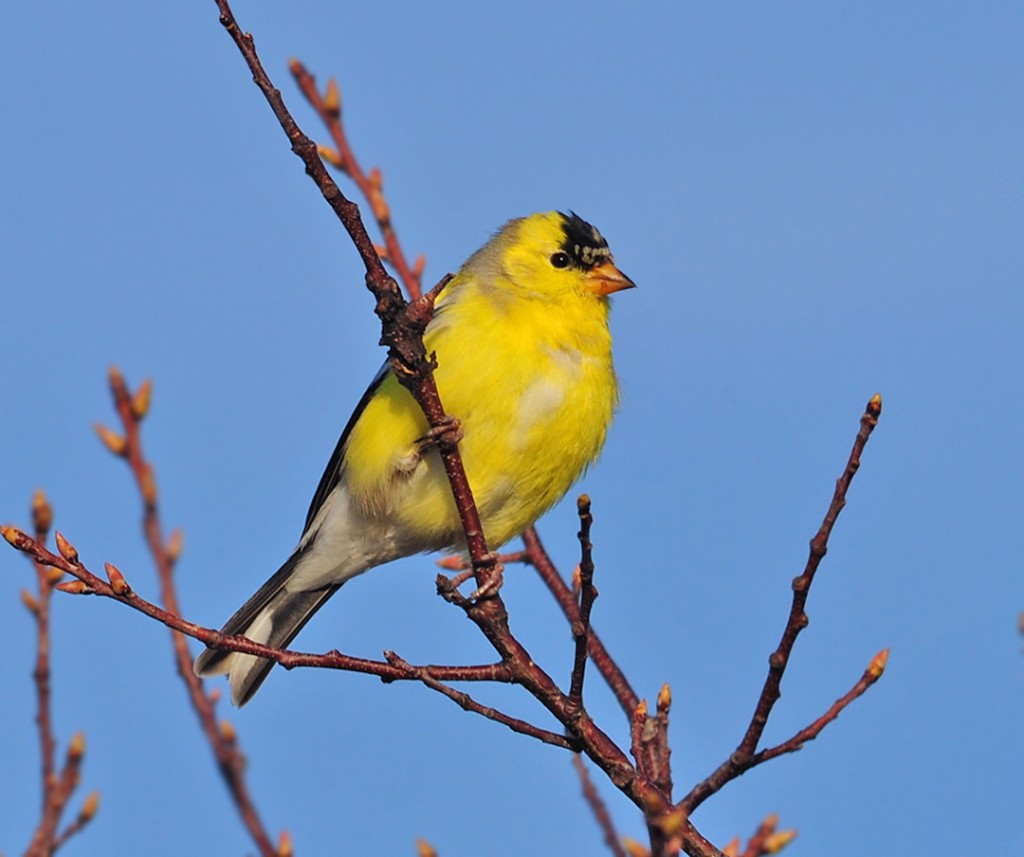The American Goldfinch

The American Goldfinch pictured above (Photo by Jeremiah Trimble) is perhaps one of the most familiar and appreciated songbirds in our area. The noted ornithologist Frank Chapman wrote: “Panoplied in jet and gold the merry, care-free goldfinches flit in the summer sunshine. They wander happily about, singing, wooing, mating, eating, drinking and bathing all summer without family worries.”
When almost all other songbirds have become quiet and are busy tending young the Goldfinch continues to sing and is very conspicuous all summer. The Goldfinch is unique among the finch family because they undergo a complete molt both in the fall and again in the spring. From the moment the Goldfinch molts in the early spring, the male seems to always be singing, most likely the longest courtship of any songbird. The bounding undulating flight of the Goldfinch is so familiar even in the winter when it flies overhead – calling “potato-chip, potato-chip.”
Being a member of the finch family, the Goldfinch is almost exclusively a seed-eater. Its’ conical bill is adapted to remove seeds from plants and trees. The Goldfinch uses its feet, climbing like an acrobat on plants such as Bee Balm and Thistle to get seeds. One of the best places to see the Goldfinch up close at Mount Auburn is in the Butterfly Garden at Willow Pond and in the Wildflower Meadow at Washington Tower. Goldfinches seem oblivious to people as they concentrate on feeding.
The Goldfinch has a short nesting season rarely producing a second brood. In our area, nesting begins in mid to late July. As a result of this late breeding, Brown-headed Cowbirds are not much of a problem and if a cowbird does lay an egg in a goldfinch nest, the young cowbird very rarely survives because of the goldfinches preference for seeds and almost no insects.
In the fall Goldfinches congregate in large flocks in weedy fields often twittering to each other. Goldfinches are easily attracted to your yard with bird feeders they especially like thistle (or black Niger) seeds.
Leave a Reply to Jennifer Johnston Cancel reply